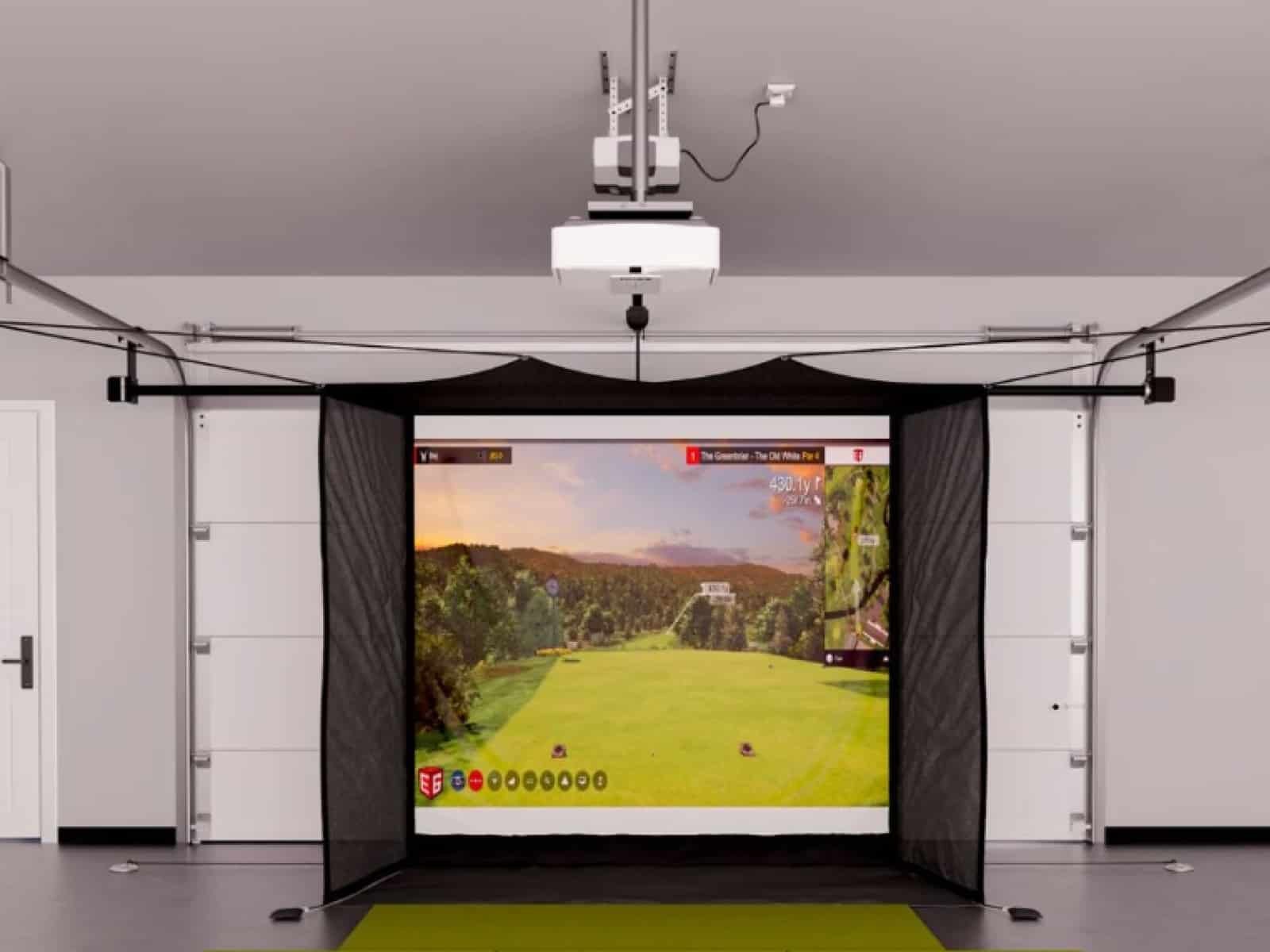The world of golf has seen a significant transformation in recent years. With the rise in popularity of the sport and the increasing need for social distancing measures, golf enthusiasts and entrepreneurs alike have turned their attention to indoor golf simulators.
These simulators, which once were a luxury, have now become a staple in many homes and businesses. They offer a unique blend of entertainment and skill development, making them an attractive venture for those looking to tap into the lucrative golf market.
If you are planning to start a golf sim business, you’ve come to the right place. We will be exploring the topic to see whether such a business is profitable in 2025.
Let’s get started!
The Profitability Question

When considering any business venture, the primary concern is its profitability. Golf sims, while promising a world of entertainment and skill enhancement, come with a substantial initial investment. The equipment, space, and setup can be costly.
However, the potential returns on this investment can be high. The key lies in understanding the market, identifying the right revenue models, and leveraging additional streams of income that come with running a simulator-based business.
Revenue Models for Golf Simulators
One of the primary ways to earn from a golf simulator business is by charging customers for usage. There are two prevalent models in this regard. The first is charging per round. This model is similar to the traditional course model where you pay for each round you play. However, this can pose challenges, especially when tracking rounds and ensuring compatibility with other activities that the simulator might offer. It’s also worth noting that while this model might work for some, it might not be as feasible as other models, especially when compared to businesses like bowling alleys that charge per game.

The second, and perhaps more straightforward model, is charging per hour, which offers simplicity and clarity. Customers rent the simulator for a set period, and they can play as many rounds as they wish within that timeframe. This model also allows for flexibility, especially when dealing with multiple users in one bay. For instance, a group of friends could split the hourly cost, making it more affordable for each individual and ensuring maximum utilization of the simulator.
Additional Revenue Streams
Beyond the direct revenue from the simulators, there are other avenues to boost profitability. One of the most lucrative is the sale of food and drinks. Many simulator venues double as social hubs, where players can relax, chat, and enjoy refreshments. By offering a menu of snacks and beverages, businesses can significantly increase their profits. On average, a customer might spend as much on food and drinks as they do on the simulator, effectively doubling the business’s revenue.
Other methods to enhance revenue include creating leagues and tournaments. Regular competitions can ensure a steady flow of customers and income. Additionally, offering lessons using the simulators can attract a clientele keen on improving their game, adding another layer of profitability.
Profitability Example

To better understand the potential profitability, let’s consider a case study using the HD Golf simulator system. This premium simulator, priced at around $69,035, offers a blend of entertainment and accuracy. The initial investment might seem steep, but when broken down against potential revenue, the picture becomes clearer.
Assuming a business charges $50 per hour and operates for 10 hours a day, the daily revenue stands at $500. This translates to $15,000 a month or $180,000 annually, purely from simulator usage. Add to this the revenue from food, drinks, lessons, and leagues, and the annual income can easily surpass the quarter-million mark.
Given these figures, the time frame for recouping the initial investment in the HD Golf simulator can be less than a year, with subsequent years promising pure profit.
Recommendations
For those planning to venture into the golf simulator business, the journey begins with research. Understanding the market, the clientele, and the competition is crucial.

Investing in high-end commercial units like the HD Golf simulator or Trackman can ensure customer satisfaction and repeat business. It’s also essential to scout for the right location, preferably in urban areas with a high concentration of golf enthusiasts.
With the right strategies and a keen understanding of the market, the golf simulator business can be a gold mine waiting to be tapped.
Conclusion
The golf simulator business, while requiring a significant initial outlay, promises substantial returns. The primary expense, the simulator itself, can be offset within a year, given the right business strategies. Moreover, installing a golf simulator can also improve your real estate value, making it a worthwhile long-term investment.
Compared to other ventures, the golf simulator business offers a unique blend of entertainment and skill development, ensuring a steady stream of customers.
With the current market trends showing a high demand for indoor golfing experiences, following the right steps to start and grow a golf simulator business can potentially rake in profits nearing a million dollars annually.
Thanks for reading!





